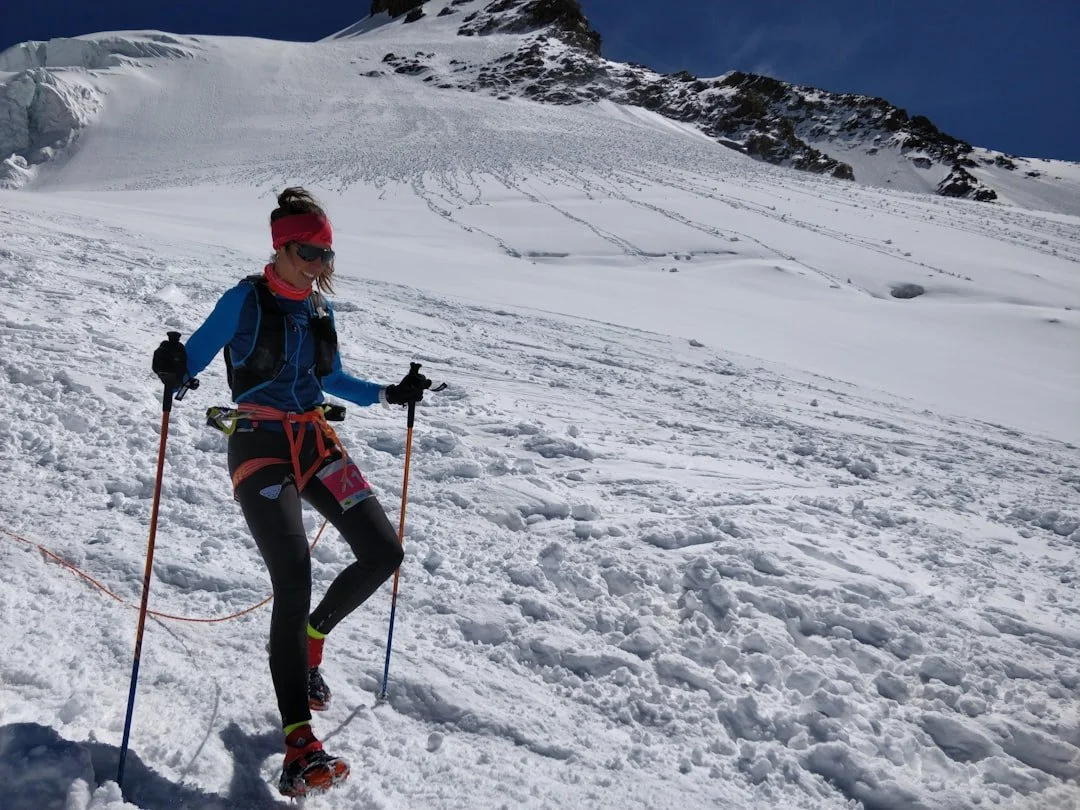Altitude Adjustment: How Training and Recovery Change in Denver's High Elevation
By Brett Green, PT, DPT • 2025-09-03
Trail runner pushing through altitude adaptation in Colorado's high country
You moved to Denver three weeks ago. Your usual Tuesday morning 5-mile loop—the one that used to feel easy—now has you gasping like you just sprinted uphill. Your heart rate spikes 15 beats higher than normal. Your legs feel heavy by mile 2.
Welcome to training at 5,280 feet, where the rules you learned at sea level no longer apply.
Here's what every new Denverite discovers: altitude doesn't just slow you down—it rewrites your entire training equation. After helping hundreds of athletes adjust to Colorado's thin air, I've learned that fighting altitude is futile. Working with it? That's where the magic happens.
The Numbers Your Body is Processing
At Denver's elevation, you're breathing air with approximately 17% less oxygen than at sea level[1]. Your VO2 max—your body's ability to use oxygen during exercise—drops by 7-10% immediately upon arrival[2].
But here's the fascinating part: your body treats this oxygen deficit as a training stimulus. Within 72 hours, your kidneys start pumping out erythropoietin (EPO), triggering increased red blood cell production. Full physiological adaptation takes 2-4 weeks, which explains why that first month feels brutal.
The Three-Phase Altitude Reality Check
Phase 1: The Shock (Days 1-7)
Your normal training paces feel impossible. Heart rates spike 10-20 beats higher than usual. Sleep quality plummets as your body adjusts breathing patterns. This isn't weakness—it's normal altitude response.
Phase 2: Early Adaptation (Days 8-21)
Energy levels stabilize. Heart rates start normalizing, though still elevated. Your body begins producing more red blood cells. Exercise feels less catastrophic, but you're not back to "normal" yet.
Phase 3: Optimization (3+ weeks)
Hemoglobin levels increase. Oxygen delivery improves. Many athletes report feeling stronger than they ever did at sea level—this is the altitude advantage kicking in.
Colorado's high country: Where your body learns to do more with less
How Training Load Changes at Altitude
Traditional training zones become irrelevant at elevation. Here's how to recalibrate:
Aerobic Base Building:
Drop training paces by 15-30 seconds per mile initially
Use perceived effort instead of GPS pace for the first month
Focus on nasal breathing—if you can't, you're going too hard
Interval Training:
Extend recovery periods by 25-30%
Reduce interval distances by 20% while maintaining time goals
Example: Instead of 6x400m, try 6x320m with longer rest
Strength Training:
Compound movements become significantly harder due to increased breathing demands
Reduce training loads by 10-15% initially
Increase rest periods between sets from 60 to 90 seconds
The Recovery Equation at 5,280 Feet
Recovery isn't just slower at altitude—it's fundamentally different. Your body is simultaneously adapting to elevation while processing training stress.
Sleep: Your Secret Weapon
Altitude disrupts sleep patterns through periodic breathing—brief pauses in breathing during sleep. This is normal but impacts recovery quality. Optimize with:
Room temperature below 65°F (cooler air holds more oxygen)
Slight head elevation to improve breathing mechanics
Consistent 7-9 hours minimum (altitude increases sleep needs)
Hydration Math Changes
At altitude, you lose fluids 40% faster through increased respiration and kidney function. The old "8 glasses" rule becomes inadequate. Aim for:
100-120 oz daily for active individuals
Pale yellow urine as your hydration gauge
Electrolyte balance becomes crucial—plain water isn't enough
Nutrition Timing Matters More
Your metabolism shifts at altitude. Carbohydrate needs increase by 10-15% as your body preferentially burns carbs in low-oxygen environments[^3]. Time your fuel:
Pre-training: Simple carbs 30 minutes before
Post-training: 3:1 carb-to-protein ratio within 45 minutes
Daily: 45-65% of calories from quality carbohydrates
The Three Training Mistakes That Wreck Adaptation
1. Maintaining Sea-Level Intensity The biggest error new Denver athletes make? Trying to match their old paces immediately. This creates excessive stress, delays adaptation, and increases injury risk. Give yourself permission to slow down.
2. Ignoring Heart Rate Variability Your autonomic nervous system works overtime at altitude. HRV typically decreases 10-20% during initial adaptation. Monitor trends rather than absolute numbers, and prioritize easy days when HRV is significantly suppressed.
3. Underestimating Recovery Needs That Tuesday-Thursday-Saturday workout schedule that worked perfectly at sea level? It might crush you at altitude. Build in extra recovery days during your first 6 weeks.
Your 4-Week Altitude Adaptation Protocol
Week 1: Survival Mode
Reduce all training intensities by 20-30%
Focus on movement quality over quantity
Prioritize sleep and hydration above all else
Week 2: Building Blocks
Gradually introduce tempo efforts (10% of weekly volume)
Maintain reduced intensities for interval work
Monitor morning heart rate for adaptation signs
Week 3: Integration
Begin approaching previous training loads
Add structured interval sessions back gradually
Still allow extra recovery between hard days
Week 4+: Optimization
Training loads can exceed previous levels
Body should feel adapted to altitude stresses
Begin to appreciate the altitude training advantage
Recovery and flexibility work become even more important at altitude
When Altitude Becomes Your Advantage
After 4-6 weeks, something beautiful happens. That oxygen deficit you've been fighting becomes your training tool. Research shows that athletes who adapt well to moderate altitude (like Denver's 5,280 feet) often see:
3-7% improvement in VO2 max when returning to sea level[4]
Enhanced oxygen delivery efficiency
Improved lactate buffering capacity
Greater mental toughness from training in challenging conditions
The key is patience. Fight altitude in those first weeks, and it fights back. Work with it, respect the adaptation process, and it becomes your training partner.
The Bottom Line
Moving to Denver doesn't just change your address—it changes your physiology. That shortness of breath isn't a sign you're out of shape; it's your body's intelligent response to less available oxygen.
Give yourself 4-6 weeks to adapt fully. During that time, ego takes a backseat to smart training. Focus on consistency over intensity, sleep over speed, and hydration over hitting perfect paces.
Your body is learning to do more with less oxygen. That's not just a training adaptation—it's a superpower in development.
Ready to embrace the altitude advantage? Start by slowing down. Your future, stronger self will thank you.
References
[1]: West JB. "High-altitude medicine." American Journal of Respiratory and Critical Care Medicine. 2012;186(12):1229-1237.
[2]: Fulco CS, et al. "Effect of altitude training on exercise capacity at moderate altitude." Journal of Applied Physiology. 2016;120(10):1234-1241.
[3]: Brooks GA, et al. "Increased dependence on blood glucose after acclimatization to 4,300 m." Journal of Applied Physiology. 1991;70(2):919-927.
[4]: Levine BD, et al. "'Living high-training low': effect of moderate-altitude acclimatization with low-altitude training on performance." Journal of Applied Physiology. 1997;83(1):102-112.
About the Author
Brett Green, PT, DPT, specializes in helping athletes optimize their training for Colorado's unique altitude challenges. Schedule a consultation at GetBack Physical Therapy to develop your personalized altitude adaptation plan.



